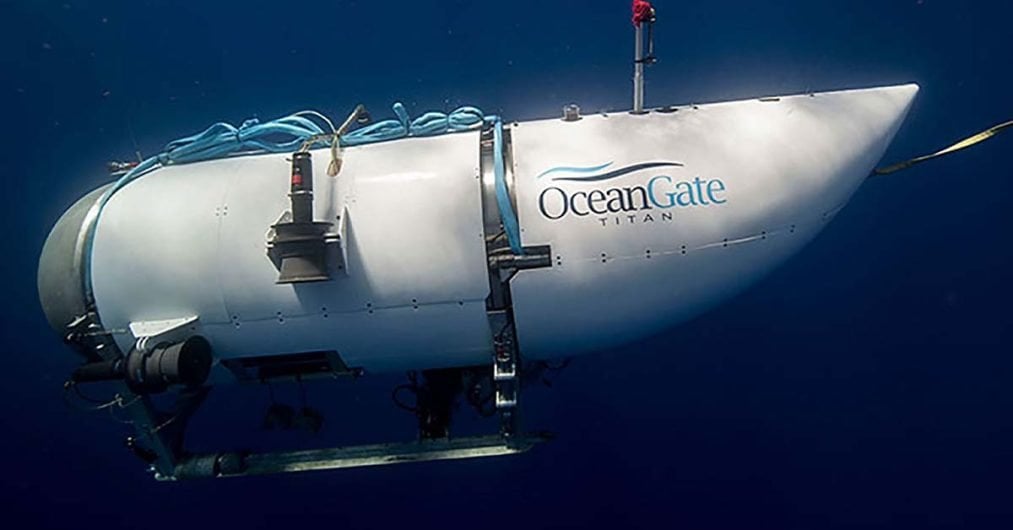The missing Titan submersible suffered a catastrophic implosion killing all five men on board; US Coast Guard confirmed last week on Thursday, June 22.
It was reported that the Titanic-bound submersible that went missing on Sunday with a crew of five men on board suffered a ‘catastrophic implosion,’ shattering pieces of the unfortunate vessel and killing everyone on board.

The US Coast Guard confirmed that a debris field on the ocean floor had been discovered in the search operation for the missing Titan submersible.
In a devastating update, the company behind the deadly voyage confirmed the news of their death and said all five people have been lost. This means that their bodies may never be recovered as they have perished in the unforgiving ocean.
“This is an incredibly unforgiving environment down there on the sea floor, and the debris is consistent with a catastrophic implosion of the vessel,” said Mauger, the First Coast Guard District Commander.
The families of the five men were immediately informed about the tragic news.

“I can only imagine what this has been like for them, and I hope that this discovery provides some solace during this difficult time,” Mauger added.
Minutes before the press briefing, the company that operated the Titan sub issued a statement and confirmed that the crew has perished in an implosion under the deep sea.
“We now believe that our CEO Stockton Rush, Shahzada Dawood and his son Suleman Dawood, Hamish Harding, and Paul-Henri Nargeolet, have sadly been lost,” OceanGate said in a statement.
The people on board have been identified as Stockton Rush, the CEO of OceanGate Expeditions; British billionaire Hamish Harding; French dive expert Paul Henry Nargeolet; and prominent Pakistani businessman Shahzada Dawood and his son, Suleman.
The debris was considered as evidence that the missing sub shattered after suffering an implosion. Now experts have explained why and how the sub might have imploded and what would have happened to the five humans on board.
“To me, it makes absolute sense that the chamber, the pressure chamber where the passengers are sitting in, did not withstand the pressure because of the material that it was built on,” Ofer Ketter, a longtime submersible expert and co-founder of private sub company Sub-Merge, told The New York Post.
“And that is exactly what imploded and turned to dust. Everything else that was either made of titanium or perhaps other steels, survived, and that’s what was found,” he said.
“They never knew it happened,” Ofer said of the five passengers adding that it all happened within a millisecond, “which is actually very positive in this very negative situation.”
“It was instantaneous – before even their brain could even send a type of message to their body that they’re having pain.”
The tragic incident made people wonder why the Titanic sank without exploding while the Titan sub-vessel imploded catastrophically.
“I have a really dumb question: If the water pressure is so bad that it can crush a sub like Whoopi Goldberg stepping on a grape, how is the Titanic sitting on the bottom and relatively intact?” one person asked on Twitter.
Well, the cause of the implosion is still under investigation, but it is believed to have been caused by a sudden change in pressure. The submersible was designed to withstand pressures up to 1,000psi, but it is possible that the pressure inside the submersible exceeded this limit, causing it to implode.
The Titan vessel was designed in way that it had the capability to withstand high amounts of crushing underwater pressure – the pressure down there is approximately 400 times greater than the sea level.
According to Physics Professor Arun Bansil, as quoted by IFLScience,
“When a submersible is deep in the ocean, it experiences the force on its surface due to water pressure. When this force becomes larger than the force hull can withstand, the vessel implodes violently.”
Implosions can occur when the pressure on the inside of an object exceeds the pressure on the outside.
As for people wondering why the mighty Titanic ship didn’t implode like the Titan submersible, well some parts of the ship did implode.
“The stern section of the Titanic likely imploded around 60 meters (200 feet) below the surface. The parts which did not implode avoided this particularly destructive event as the air had been released from within, causing the pressure to be equal on the outside and inside (conditions under which implosion will not occur).”
Let us know your thoughts in the comments.
Source: IFLScience

